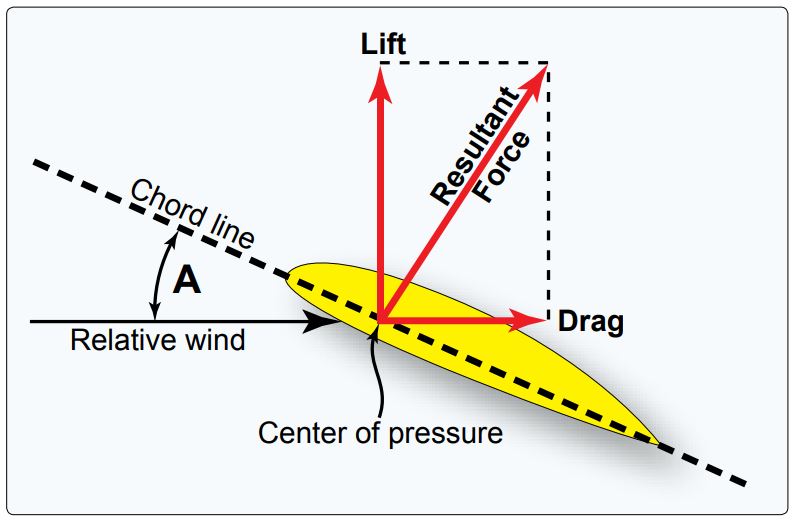

Practice for your FAA Private Pilot Written Exam below. These example questions will help you decide if you are prepared.

METAR KINK 121845Z 11012G18KT 15SM SKC 25/17 A3000
SPECI KJFK 121853Z 18004KT 1/2SM FG R04/2200 OVC005 20/18 A3006
Special report reads: at KFJK on the 12th day at 1853Z the wind was 180 degrees at 4 knots. There is a half SM of visibility. FG = Fog. On runway 4 the visibility is 2200 meters. The clouds are overcast at 500 feet AGL. Temperature is 20 degrees celsius and dew point is 18 degrees celsius and the altimeter setting is 30.06

The angle of attack is the angle between the chord line of an airfoil and the relative wind

Altimeter one reads 10,500’ indicated altitude. The long arm pointed at the 5 shows us altitude in 500’s of feet. The short skinny hand pointed at the 1 shows us altitude in 10,000’s. Then, the short fat hand shows us altitude in 1,000’s.
14 CFR 91.151 tells us that no person may begin a flight in an airplane under VFR conditions at night unless there is enough fuel to fly to the first point of intended landing and for at least 45 minutes past that point, assuming normal cruise.

The runway length is depicted in the airport description in 100’s of feet. The “55” in the airport description tells us the runway at Chesapeake Airport is 5,500 feet.


To calculate the crosswind component using the chart, you take the angular difference between the wind and the runway, in this case it is 30 degrees. So you see the red line drawn from 30 degrees at the top down to 20 knots. The 20 knots represents the wind speed. From the intersection of 30 degrees and 20 knots we can get our crosswind component of 10 knots at the bottom of the chart.